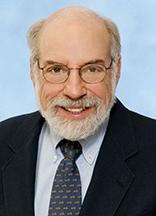Biography
Jonathan M. Rubin is currently an Emeritus Professor of Radiology at the University of Michigan. He received his B.A. degree in Chemistry from the University of Utah, and he received his M.D. and his Ph.D. in Biophysics and Theoretical Biology from the University of Chicago. Dr. Rubin completed his residency in Radiology at the University of Chicago, and since 1984 he has been on the Radiology Faculty of the University of Michigan. He had been either the co-Director or Director of Ultrasound in the Radiology Department for 30 years. At the time of his retirement, he was the William Martel Collegiate Professor of Radiology at Michigan. He has over 240 peer reviewed publications and 16 patents. He has been Deputy Editor for Physics for Academic Radiology and Associate Editor for Ultrasound in Medicine and Biology and for the Journal of Ultrasound in Medicine. He has received the Lawrence Mack Lifetime Achievement Award from the Society of Radiologist in Ultrasound, the Joseph H. Holmes Clinical Pioneer Award from the American Institute of Ultrasound in Medicine, the Innovations Award from the University of Michigan Medical School, the University of Michigan Medical School Distinguished Alumni Award, and he is a Distinguished Investigator in the Academy of Radiology Research. He has been PI on multiple grants from industry and NIH. The Department of Biomedical Engineering at the University of Michigan has recently named a Collegiate Professorship in his honor.
His research has focused on the basic physics and clinical applications of medical ultrasound. Some of his achievements include the development and clinical introduction of power Doppler, a method that is now widely used in multiple clinical situations for evaluating blood flow and has become a standard function on most diagnostic ultrasound machines. He was also instrumental in introducing ultrasound into the neurosurgical operating room for real-time guidance during intracranial and spinal surgery. His most recent interests relate to blood volume flow measurements using ultrasound and the use of ultrasound for assessing placental function. The volume flow method employs 3D ultrasound along with Gauss’s divergence theorem to quantify true blood flow. The most recent implementation of this method permits total brain blood flow measurements in neonates. The placental measurement technique analyzes umbilical venous Doppler spectra in order to determine the placenta’s response to the maternal and fetal arterial input flows. Both the maternal and fetal inputs are assessed simultaneously. This method provides a means for evaluating placental function and structure in new ways.
Clinical Interests
Flow imaging, elastography, perfusion, ultrasound contrast agents, ultrasound anisotropy.
Credentials
Medical School or Training
- University of Chicago, 1974
Residency
- University of Chicago, Pritzker School of Medicine, Radiology, IL, 1978
Board Certification
- Diagnostic Radiology

